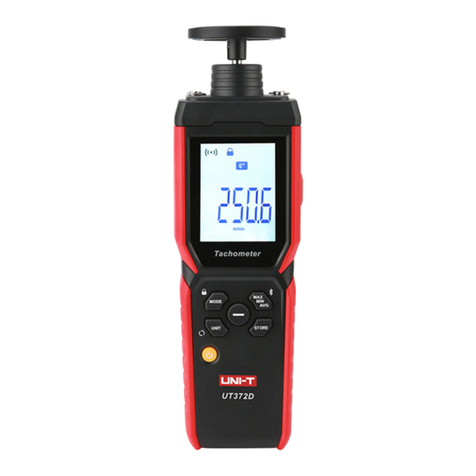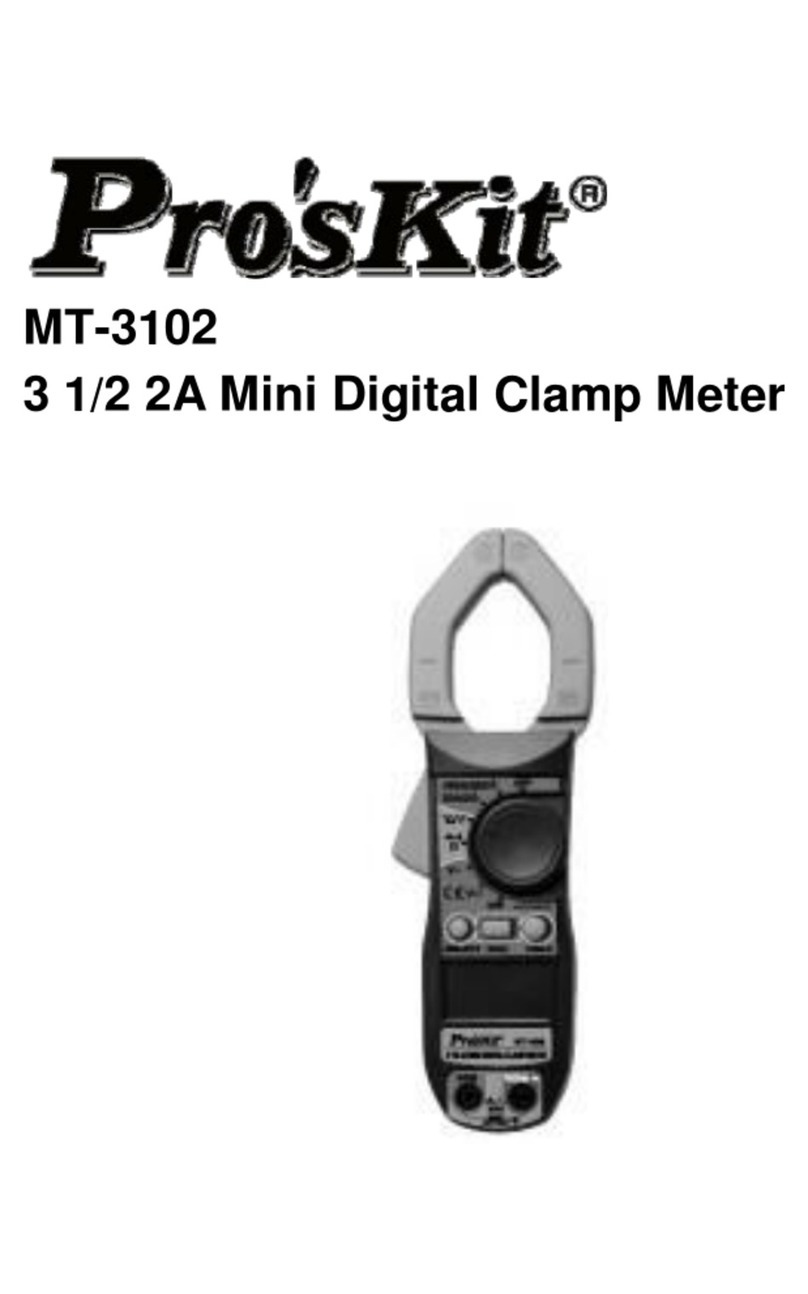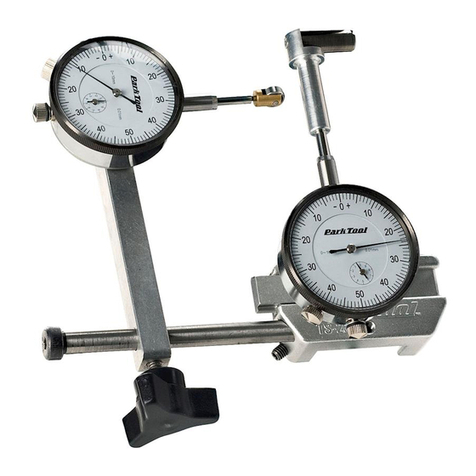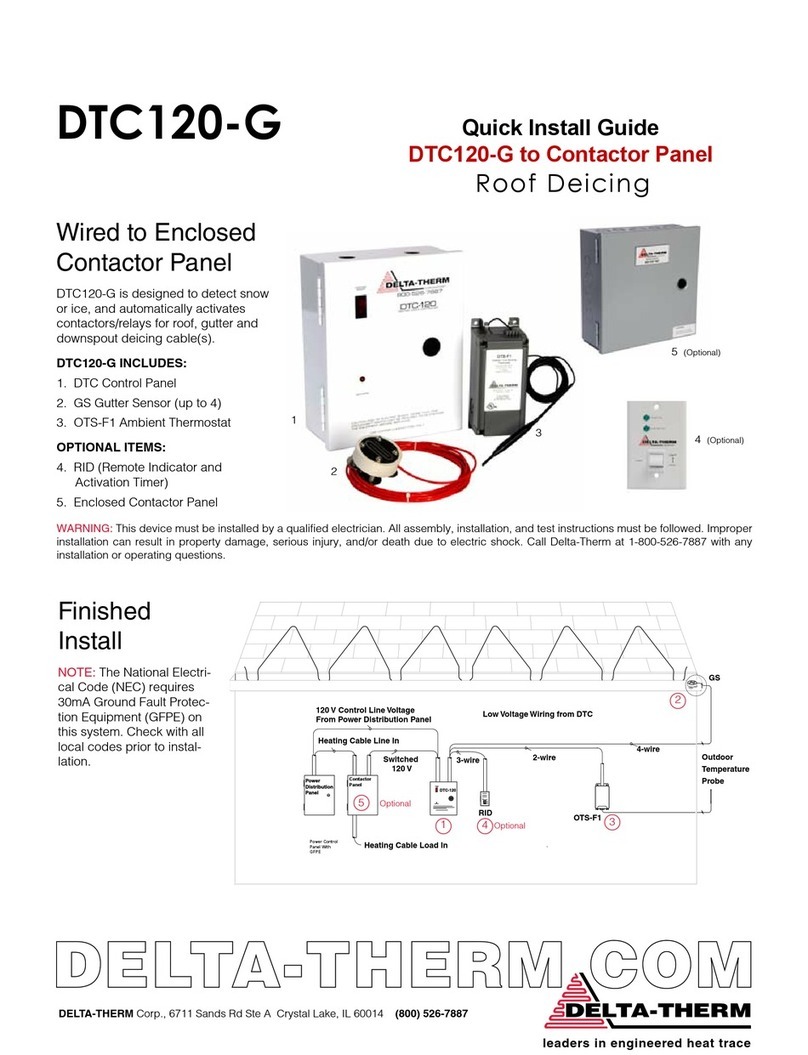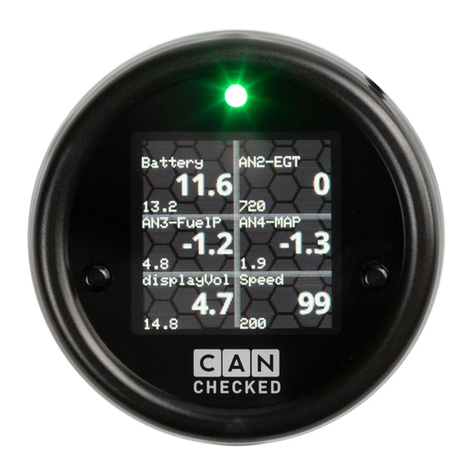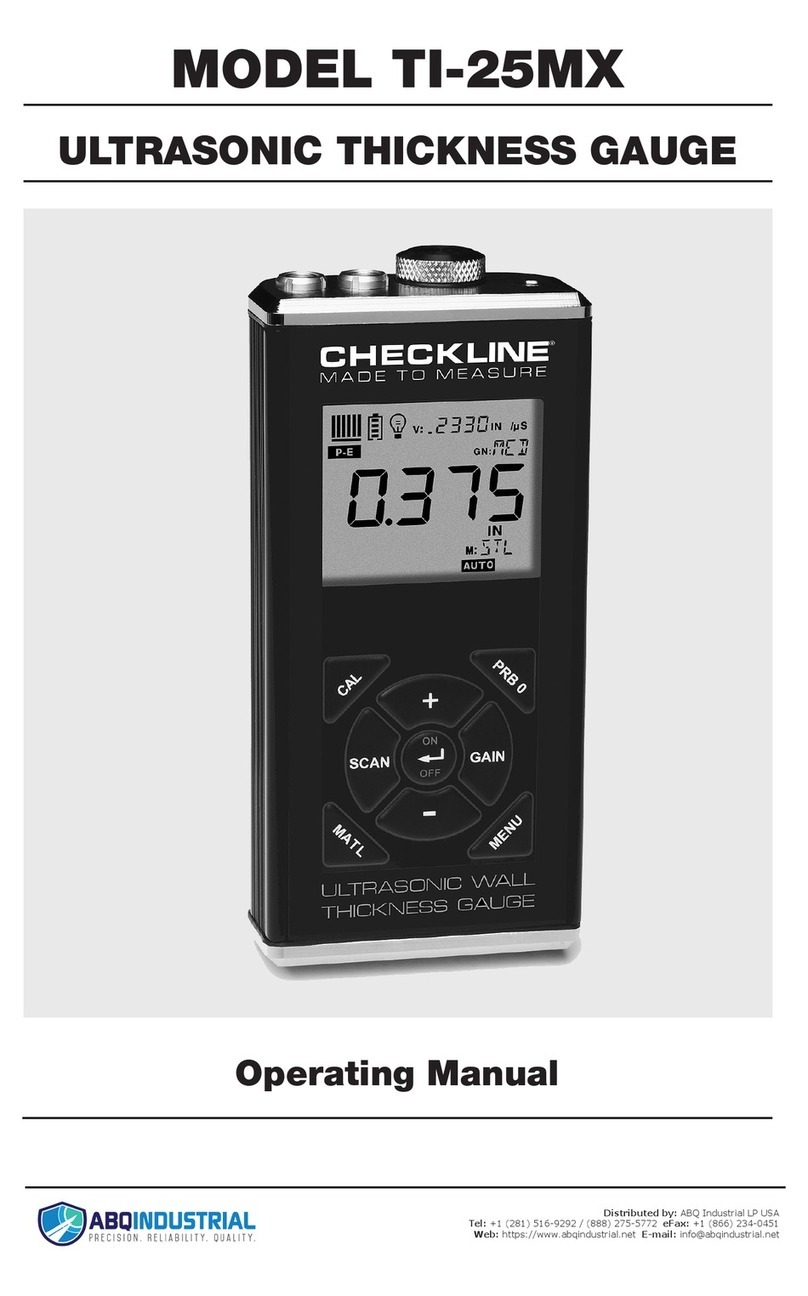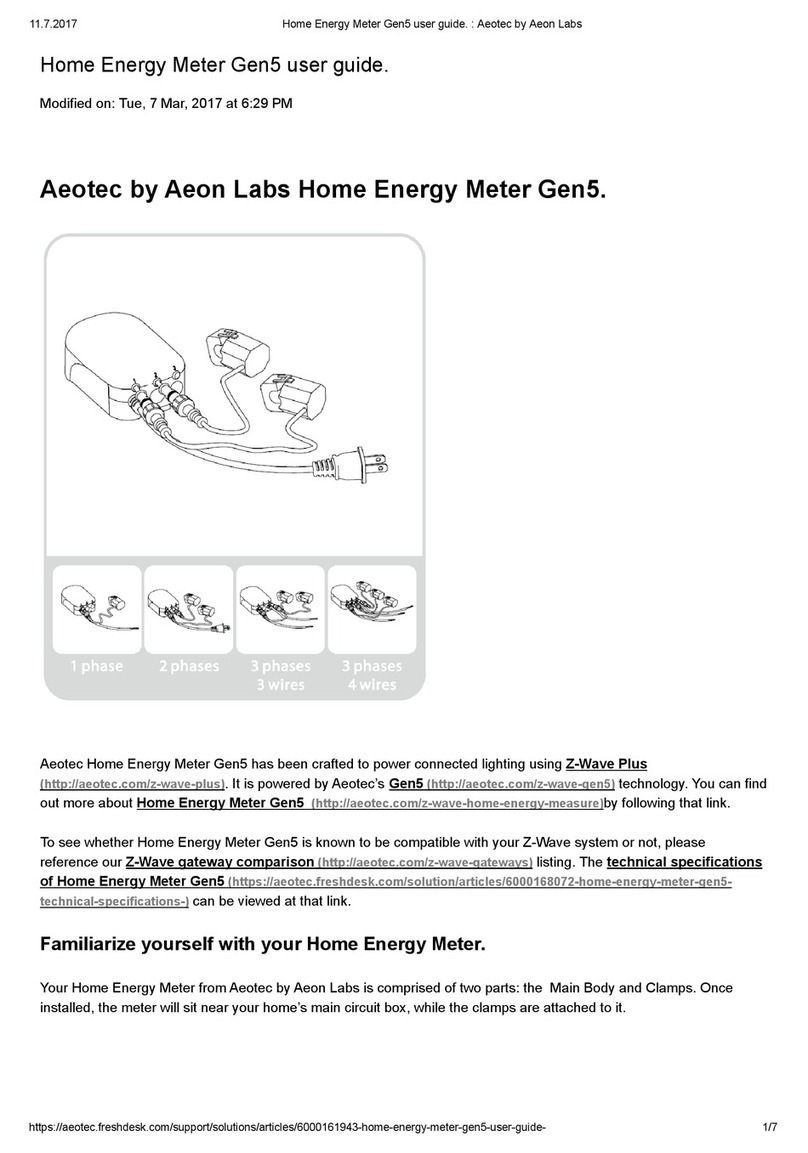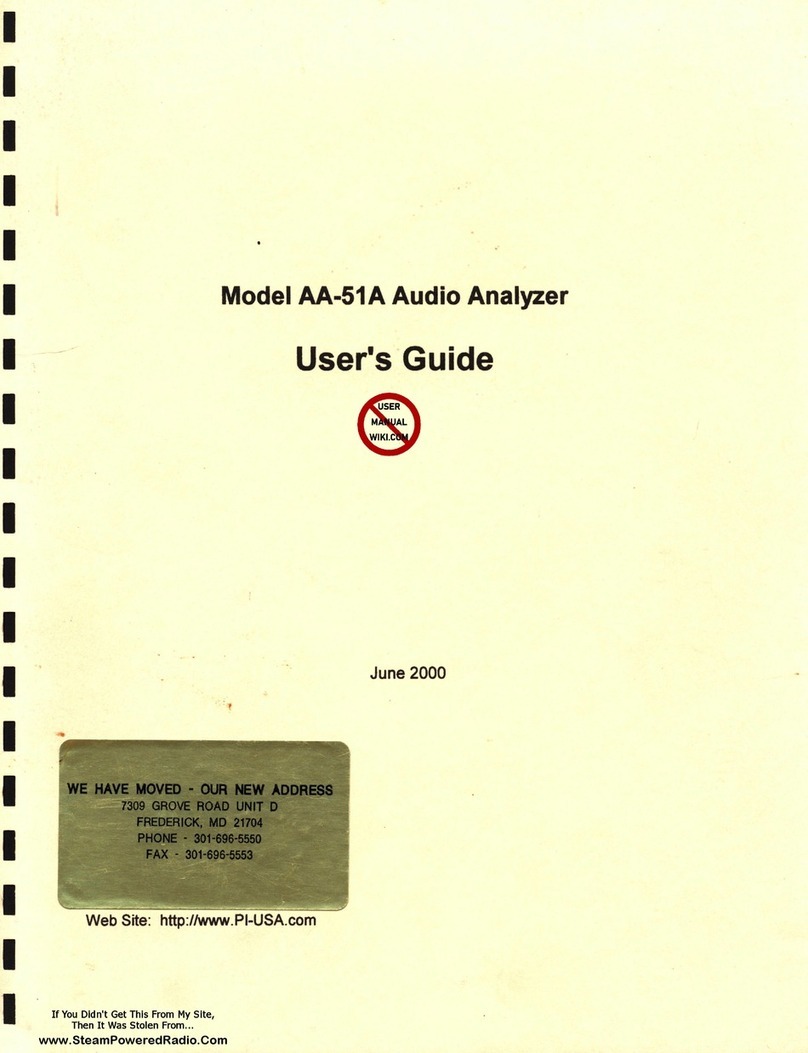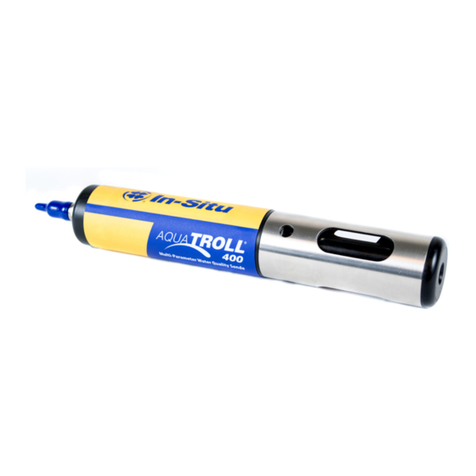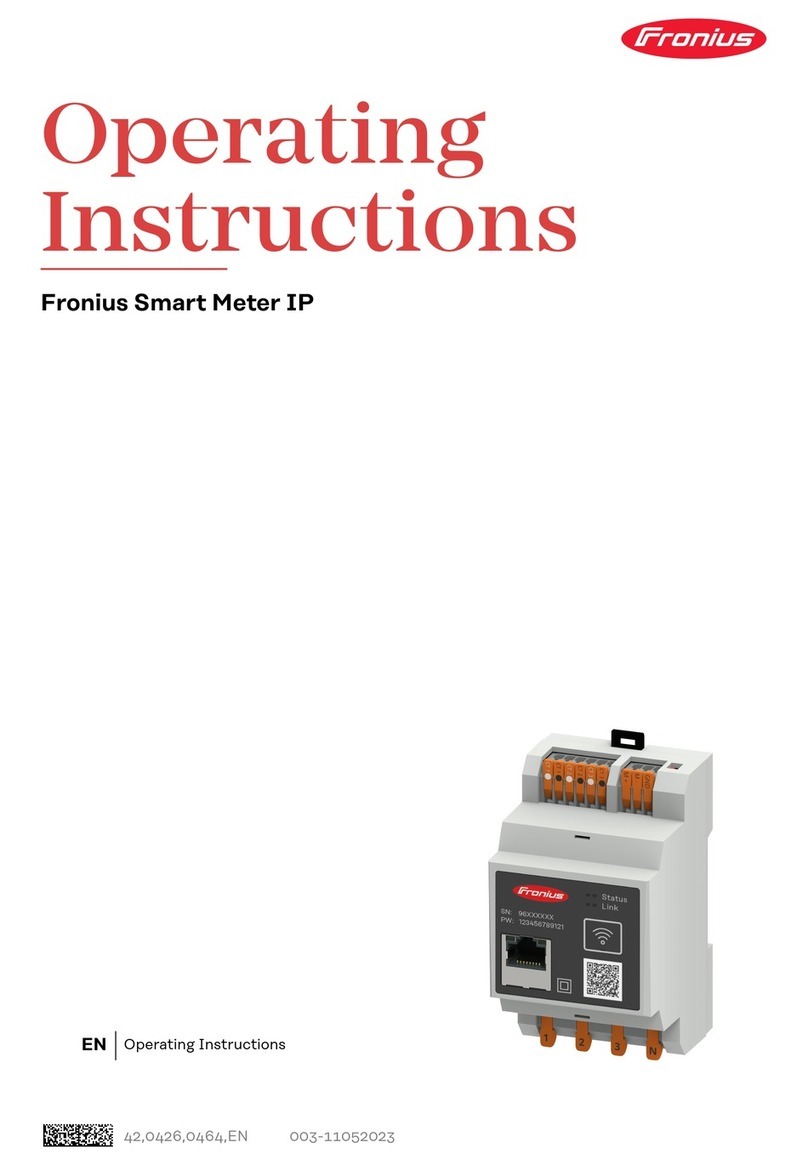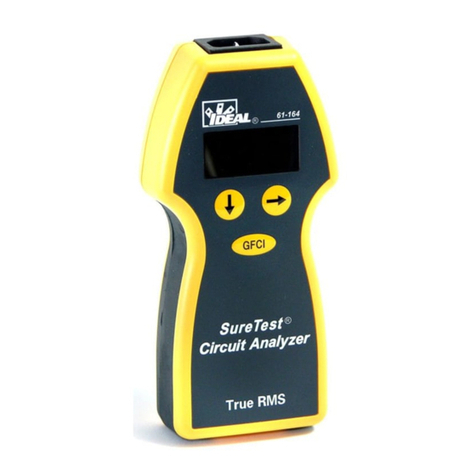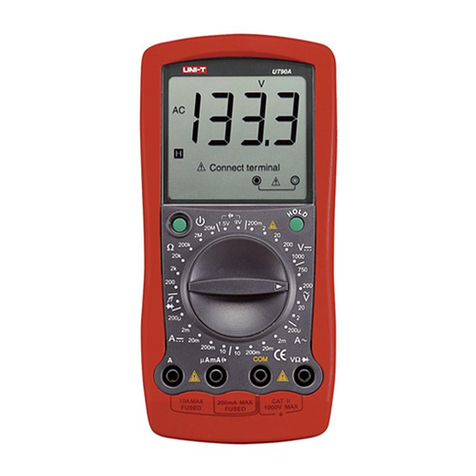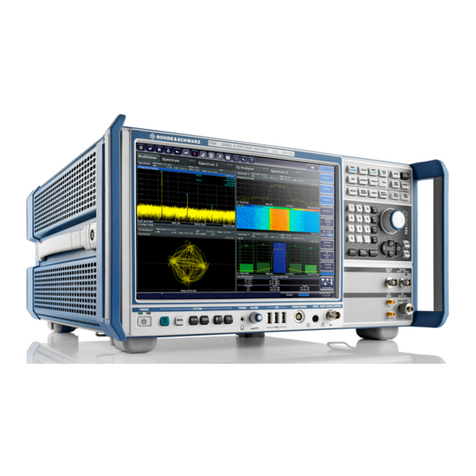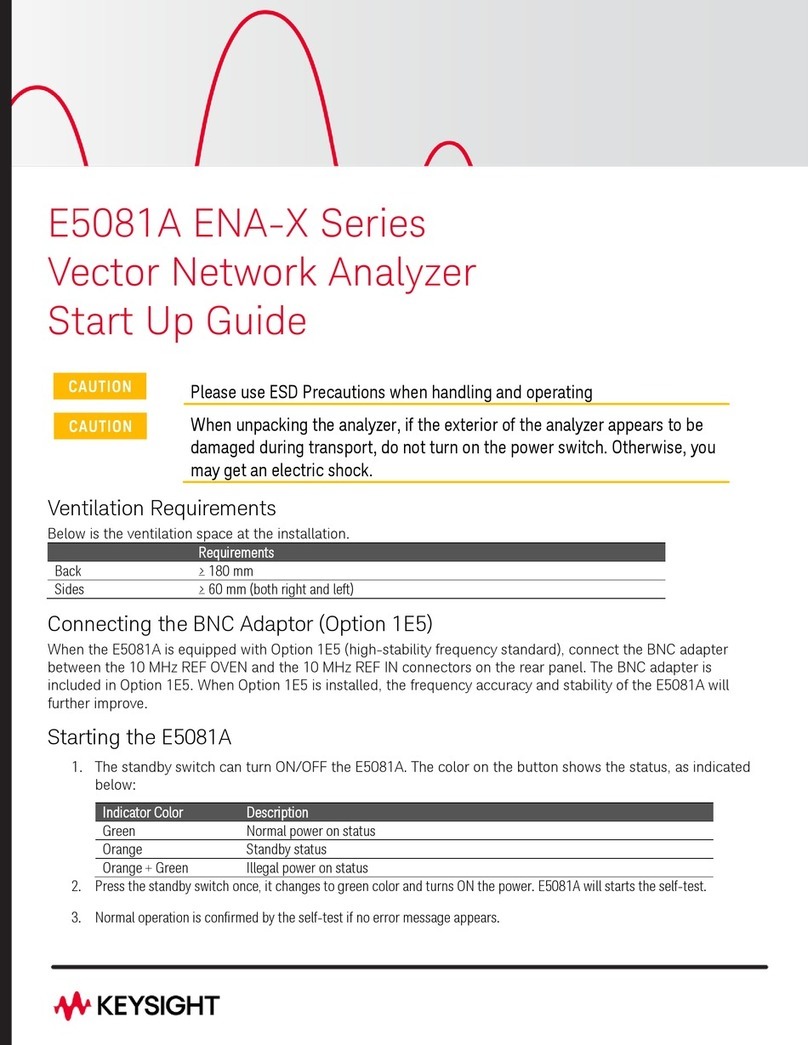Datamatic Firefly User manual

DRAFT 1
DRAFT
©Datamatic, Ltd. 2000 - 2005
Version 2.8.2
FIREFLY
AMR SYSTEM REFERENCE
MANUAL
CONFIDENTIAL AND PROPRIETARY
2000-2004 By Datamatic, Ltd.
All Rights Reserved
3600 K Avenue
Plano, TX 75074
24-Hour Customer Support
(888) 326-5032 or (214) 540-5200
Internet: http://www.datamatic.com
THIS DOCUMENT CONTAINS THE TRADE SECRETS AND PROPRIETARY INFORMATION OF
DATAMATIC, LTD. NEITHER THIS DOCUMENT NOR ANY PART THEREOF MAY BE REPRODUCED
WITHOUT THE EXPRESS WRITTEN CONSENT OF DATAMATIC, LTD., NOR SHALL ANY INFORMATION
CONTAINED HEREIN RELATING TO THE FUNCTIONING OF THE ELECTRONIC METER READING
SYSTEM BE DISCLOSED TO ANYONE WHO DOES NOT HAVE A NEED TO KNOW THE CONTENTS AND
UNDER NO CIRCUMSTANCES SHOULD THIS INFORMATION BE DISCLOSED TO ANY PERSON NOT
EMPLOYED BY THE UTILITY WITHOUT THE EXPRESS WRITTEN CONSENT OF DATAMATIC, LTD.


DRAFT 3
DRAFT
©Datamatic, Ltd. 2000 - 2005
Table of Contents
Chapter 1: System Overview ................................................. 5
System Features................................................................................................5
FIREFLY AMR System Features...................................................................5
Interfacing Options .................................................................................5
Meter Options ...............................................................................................5
Installation Options........................................................................................6
Reading Methodologies ................................................................................6
Customized Programming Options................................................................6
Equipment..........................................................................................................6
ROADRUNNER Handheld Computer............................................................6
Key Descriptions.....................................................................................6
Keyboards............................................................................................10
Radio Frequency Receiving Unit (RFRU)....................................................11
Programming/Profiling Unit (PPU) for Water FIREFLYs..............................11
Programming/Profiling Unit (PPU) Cable.....................................................11
Config Tester (CT) for Water FIREFLYs......................................................11
FIREFLY Meter Interface Unit (MIU) – Water..............................................12
FIREFLY Optical Sensor.............................................................................12
Optical Sensor Tape Specification........................................................12
Installation Preparation.....................................................................................13
Installation Considerations..........................................................................13
Water FIREFLY Installation..............................................................................13
Installing the Optical Sensor-End FIREFLY.................................................13
Meter Preparation.................................................................................13
Background Check for Firmware Version 0210 and Prior Sensor
Firmware Versions Only .......................................................................14
Sensor Flap..........................................................................................14
Sensor Placement................................................................................14
Installing the Wire-end FIREFLY.................................................................15
Installing the Wire-end FIREFLY with a Logical Switch...............................16
Profile Data Extraction with Water FIREFLYs...................................................16
Electric FIREFLY MIU.................................................................................19
Meter Reading......................................................................................19
Demand Data.......................................................................................19
Profile Data...........................................................................................19
Power...................................................................................................19
Electric FIREFLY Specifications...........................................................20
Gas FIREFLY MIU......................................................................................21
Meter Reading......................................................................................21
Profile Data...........................................................................................21
Powering ..............................................................................................21
Gas FIREFLY Specifications ................................................................22
Profile Data Extraction for Gas and Electric FIREFLYs ....................................22
Viewing Profile Data in RouteSTAR MVP.........................................................24
Viewing ProfilePLUS Data via RouteSTAR MVP.........................................24
Viewing Data in ProfilePLUS.......................................................................27
Global Settings Menu ...........................................................................27

DRAFT
4 FIREFLY AMR REFERENCE MANUAL
DRAFT
©Datamatic.com, Ltd. 2000 - 2005
Appendix A: Glossary of Terms ...........................................37
Appendix B: Equipment Maintenance ....................................45
RMA Return Maintenance Authorization ..........................................................45

DRAFT 5
DRAFT
©Datamatic, Ltd. 2000 - 2005
FCC ID: ODYD740, ODYD2200, ODYD2212, ODYD2300,
ODYD2500, and ODYD3000 Datamatic, Ltd.
This device complies with Part 15 of the FCC Rules.
Operation is subject to the following two conditions:
1) This device may not cause harmful interference, and
2) This device must accept any interference received, including
interference that may cause undesired operation.
Notice Specific to FCC ID: ODYD3000 Datamatic, Ltd.
This device must be professionally installed, below grade, in
a meter pit enclosure.
WARNING: These devices operate under Part 15 of the FCC rules.
Modifications to these devices not expressly authorized by
Datamatic, Ltd. may affect your ability to legally operate these
devices.

DRAFT
6 FIREFLY AMR REFERENCE MANUAL
DRAFT
©Datamatic.com, Ltd. 2000 - 2005
1
11
1
Chapter 1: System Overview
This document covers the setup and operation of the FIREFLY Radio Frequency
Automatic Meter Reading (AMR) system, used in conjunction with the RouteSTAR
Meter Reading System (RouteSTAR MVP).
All information presented herein assumes the installation and understanding of the
RouteSTAR MVP software and associated ROADRUNNER ruggedized, handheld
computers. Refer to the ROADRUNNER system manual and Training Guides for
additional information.
The RouteSTAR MVP system is designed to provide a fast, efficient method of
collecting meter reading data from a variety of sources. This includes FIREFLY AMR
meter readings as well as ProfilePLUS™historical usage data.
More specifically, utility meters are outfitted with FIREFLY Meter Interface Units
(MIUs) that transmit meter readings and associated information. Field personnel collect
these radio frequency readings via ROADRUNNERs equipped with an integrated Radio
Frequency Receiving Unit (RFRU) or ROADRUNNER Mobile.
Likewise, the MIUs provide a feature called ProfilePLUS to keep track of historical
usage data. This data helps solve billing disputes, and enable variable rate billing and
load management studies. ROADRUNNERs are used in conjunction with
Programming/Profiling Units (PPUs) for water FIREFLYs to extract this data on
demand.
System Features
FIREFLY AMR System Features
! ProfilePLUS: Usage data based on programmable interval setting.
! Quick and easy installation.
Interfacing Options
! 1. Optical “through-the-glass” sensor end.
! 2. Pulse or encoded wire-end.

DRAFT Chapter 1: System Overview 7
DRAFT
©Datamatic, Ltd. 2000 - 2005
! 3. Under-glass interfacing (electric meters).
! 4. Direct-mount to gas meters
Meter Options
Water Electric Gas
Pulse meters Single-Phase Meters Analog Index Meters
Encoded meters
Analog meters with one
sweep hand
Installation Options
Field installation in less than 10 minutes in most cases
! Above ground.
! Below ground: Pits, vaults, and basements.
Reading Methodologies
! Walk-by with the ROADRUNNER handheld.
! Drive-by with the ROADRUNNER Mobile system.
Customized Programming Options
! Programmable ID, communications, and profiling interval.
! Profiling capability: Interval consumption logging.
Equipment
ROADRUNNER Handheld Computer
Key Descriptions
There are two different types of keys on each keypad: data keys and function keys.
Data keys are the letter and number keys, A- Z and 0- 9. They are used to insert
data into the ROADRUNNER.
Function keys are labeled on the keyboard or the template. They are used to perform a
special procedure or function.
The SHIFT key shifts between the numeric and alphabetic keyboard on the
ROADRUNNER 860 and activates some of the function keys.

DRAFT
8 FIREFLY AMR REFERENCE MANUAL
DRAFT
©Datamatic.com, Ltd. 2000 - 2005
Note: Under the column for the ROADRUNNER X7, the following keys: #
##
#, $
$$
$,
%
%%
%, &
&&
&refer to the cursor pad located in the upper right corner of the keyboard. This
key groups together the four arrow keys, also called the direction keys.
Cursor Pad
Function ROADRUNNER
X7 ROADRUNNER
860
Menu
Displays the Main Menu [F1] [F1]
Contrast Up
Lightens the screen intensity when the APD is
displayed.
[FNCTN] [F4] #
##
#
Send
Initiates the communication procedure to
send/receive data to/from the MVP PC.
[F3] [F3]
Contrast Down
Darkens the screen intensity when the APD is
displayed.
[FNCTN] [F5] $
$$
$
Light
Turns the display backlight on/off. The light
will turn off automatically after approximately
2½ minutes of inactivity, to conserve power.
[FNCTN] [F3] [F5]
On/Off
Turns power on and off to the
ROADRUNNER. To conserve battery power,
the ROADRUNNER automatically turns itself
off after approximately 2 ½ minutes of non-
use.
[F1] / [FNCTN+F1] [ON/OFF]
Search
Initiates the Search function. [F2] [A]
Correct
Corrects entered data; used in conjunction with
other function keys to make corrections to
codes or messages.
[F4] [C]
End
Erases data in the current field, or acts as an
escape key, exiting a menu or function and
returning to the APD.
[FNCTN] [ESC] [END]
Skip
Enters a Skip Code in the reading field that
specifies the reason a reading was not entered.
[E] [E]

DRAFT Chapter 1: System Overview 9
DRAFT
©Datamatic, Ltd. 2000 - 2005
Trouble
Enters a Trouble Code, designating that an
unusual condition or problem exists at the
meter.
[F] [F]
Survey
Survey messages are displayed and allows the
meter reader to enter survey responses.
[G] [G]
Interrogate
Begins user-selected FF interrogation method. [I] [I]
Special Message
Displays special messages, if present, which
have been sent from the Host. If used in
conjunction with the [ CORRECT ] key, a
special message may be entered or edited.
[J] [J]
Totals
Displays the total number of normal, demand,
checks and total devices in the route. Also
displays the total devices read, skipped, blank,
with trouble codes, failed audits and the route
number.
[K] [K]
New Meter
Adds a new meter to the current route. [L] [L]
Shift
On the X7, switches between upper and lower
case alpha characters. On the 860ES, switches
back and forth between the numeric function
mode and alpha mode.
[SHIFT]
Account Info
Displays the customer's name, address, account
number, and sequence number.
[N] [N]
Meter Info
Displays the device information associated
with the device record displayed on the APD.
Information includes meter number, meter
type, number of dials and number of decimals.
[O] [O]
Route Info
Displays route information including route
number, current date and time, meter reader ID,
total meters, total read, total skips, total blanks,
trouble codes, and failed audits. A second
screen contains vehicle information including
vehicle ID, and beginning and ending mileage.
[P] [P]
Clear
Erases data in the current field. [FNCTN] [DEL] [CLEAR]
Account Number
Displays the account number during a search,
correction, or view.
[Q] [Q]

DRAFT
10 FIREFLY AMR REFERENCE MANUAL
DRAFT
©Datamatic.com, Ltd. 2000 - 2005
Meter Number
Displays the meter number during a search,
correction, or view.
[R] [R]
Sequence Number
Displays the sequence number during a search,
correction, or view.
[S] [S]
Top
Scrolls through menus. Finds the beginning of
a route when used with the [ SEARCH ] key.
TIP: Press the [ SEARCH ] then the
[ TOP ] key to find the beginning of
the route.
#
##
#
[F2] #
##
#
[A] %
%%
%
Instruction
Displays the instruction message during a
search, correction, or view.
[T] [T]
Location
Displays the meter location during a search,
correction, or view.
[U] [U]
Read Type
Displays the meter read type during a search or
correction.
[V] [V]
Bottom
Scrolls through menus. Finds the end of a
route when used with the [ SEARCH ] key.
TIP: Press the [ SEARCH ] then the
[ BOTTOM ] key to find the end of
the route.
$
$$
$
[F2] $
$$
$
[A] &
&&
&
Blank
Displays blank devices during a search. [W] [W]
Constant
Displays the device constant during a search,
correction, or view.
[X] [X]
Previous Est
Displays the previous estimate for a device. [Y] [Y]
Repeat
Repeats the last search criteria entered. [F2] [ENTER] [A] [ENTER]
No
Responds "NO" to Yes/No questions. [ESC] [NO]
Space
Enters a space when typing in text. [SP] [SP]

DRAFT Chapter 1: System Overview 11
DRAFT
©Datamatic, Ltd. 2000 - 2005
Enter/Yes
Accepts entry of information typed in and is
the ‘Yes’ answer for Yes/No questions.
[ENTER] [ENTER]
FIREFLY Menu
Displays the FIREFLY Menu when the
ROADRUNNER application includes AMR.
[F5] [SHIFT] [I]
Backspace
Moves the cursor to the left one character and
erases the character.
[BKSP]
OR
%
%%
%
%
%%
%
Keyboards
ROADRUNNER 860 ROADRUNNER X7

DRAFT
12 FIREFLY AMR REFERENCE MANUAL
DRAFT
©Datamatic.com, Ltd. 2000 - 2005
Radio Frequency Receiving Unit (RFRU)
The ROADRUNNER Radio
Frequency Receiving Unit (RFRU)
receives and buffers radio readings,
then downloads them to the
ROADRUNNER handheld unit
when interrogated ("I" key).
The ROADRUNNER RFRU is an
integrated, internal unit, powered by
a rechargeable NiCad battery pack.
Programming/Profiling Unit (PPU) for Water FIREFLYs
The Programming/Profiling Unit
(PPU) is used to configure the MIUs,
and to extract ProfilePLUS
historical reading information.
The PPU creates a "positive snap"
interface with the MIU for
hands-free operation, and when
cabled to the ROADRUNNER
handheld, enables communication.
The PPU is powered with one 9-volt
battery.
Programming/Profiling Unit (PPU) Cable
A cable is used to connect the PPU to a ROADRUNNER for programming and
extraction of profile data from a Water FIREFLY.

DRAFT Chapter 1: System Overview 13
DRAFT
©Datamatic, Ltd. 2000 - 2005
Config Tester (CT) for Water FIREFLYs
The Config Tester (CT) is similar to
the PPU. It is a stand-alone device
for resetting the FIREFLY to
dormant and factory configurations.
Once coupled with the MIU and
activated, there are three lights
which display the status:
Yellow = Updating
Green = Successful
Red = Unsuccessful
FIREFLY Meter Interface Unit (MIU) – Water
The FIREFLY Meter Interface Unit
(MIU) tracks and transmits reading
data. Each MIU includes
ProfilePLUS which tracks and
stores over 1,700 of the most recent
readings. For example, the MIU can
be configured to record 72+ days of
hourly consumption readings,
enabling the resolution of billing
complaints.
The FIREFLY signal includes the
meter number, meter reading, battery
voltage, tamper flag, and a leak
indicator.
The FIREFLY MIU is powered with a 3.6-volt lithium chloride D-cell battery.
Material: Polycarbonate
Construction: Ultrasonic welding
Temperature Rating: Sensor-end: -10°C to +43°C
Wire-end: -40°C to +85°C
Radio communications: 916.5 MHz
Radiated power: .75 mW

DRAFT
14 FIREFLY AMR REFERENCE MANUAL
DRAFT
©Datamatic.com, Ltd. 2000 - 2005
FIREFLY Optical Sensor
The FIREFLY MIU uses a unique and
highly sophisticated optical sensor unit
to track meter activity. An infrared
strobe is integrated into the sensor and
generates its own light, regardless of
ambient conditions. The sensor is
oriented so that the register needle
approaches the sensor from the cable
side and perpendicular to the cable.
The indicators on the top side of the
sensor need to be aligned with the
passing sweep hand. As the needle
sweeps past the sensor, it changes the
light reflected back from the meter
face, and an incremental count is
registered.
The Optical Sensor is affixed to the
meter face using a high-bond adhesive
tape. Specifications for the tape follow.
Optical Sensor Tape Specification
Manufacturer 3M.
Material Acrylic Foam-Closed Cell.
Thickness .045 inch.
Color White/gray.
Release Liner .002 inch clear polyester.
Application Temp 32°+ Fahrenheit.
Curing 24-96 hours.
Peel Adhesion Test 18lb. per square inch (to stainless at room temp).
ASTM B-3330.
D-897.
Tensile Strength 110 lbs. per square inch.
Static/Sheer Test At 72 degrees – 1250 lbs.
(Slide pressure) At 150 degrees – 500 lbs.
Temperature Tolerance 300 degrees.
Pressure Activated 16 lbs.

DRAFT Chapter 1: System Overview 15
DRAFT
©Datamatic, Ltd. 2000 - 2005
Installation Preparation
Installation Considerations
1. Signal distance varies depending on the location of the MIU. FIREFLYsinstalled
above-ground generally transmit the greatest distance.
2. The material of a pit or vault lid affects the transmission range. For example, a
transmitter has a greater range sending from a pit with a plastic lid than a cast iron
lid.
3. Lids with holes of a diameter of roughly 1 3/4 inches make it possible to mount the
FIREFLY MIU through the lid. This can increase transmission range significantly.
4. Complete field installation of an MIU takes 5-10 minutes, depending on the meter
location and mounting application.
5. If the lid has a hole for the unit, use the
cap and wing nut assembly (“lid lock”
pictured at right). Ensure that enough
space exists between the box lid and
the ground for the unit to sit. If not,
remove some of the dirt from the
bottom of the box. Do not over-
tighten lid locks.
Water FIREFLY Installation
Installing the Optical Sensor-End FIREFLY
Meter Preparation
1. Remove meter box lid.
2. Survey the meter, checking lid, hole depth, and overall cleanliness.
3. Check for meter disqualifications and enter the corresponding skip code.
4. Clean excess dirt from meter lid, exposing meter number and verify it with the
account on the ROADRUNNER.
5. Flip lid back and pre-clean meter face/lens using Fast Orangenon-pumice cleaner
and a cloth or cotton swab to remove residue.
6. Clean meter face/lens with 99% isopropyl alcohol and a NEW lint-free cotton swab.
Note: Use Isopropyl rubbing alcohol, 99% by volume. Lower
concentrations do not clean or evaporate as well and adversely affect the
sensor-to-meter bond.

DRAFT
16 FIREFLY AMR REFERENCE MANUAL
DRAFT
©Datamatic.com, Ltd. 2000 - 2005
7. Re-wipe the surface of the meter lens with a clean, new cotton swab each time until
the swab comes up clean, and the clean lens squeaks when wiped.
8. After cleaning, ensure that the lens is completely dry; allow time for the alcohol to
evaporate
Background Check for Firmware Version 0210 and Prior
Sensor Firmware Versions Only
1. Connect the ROADRUNNER to the FIREFLY via the PPU.
2. On the ROADRUNNER 860 Press SHIFT I to display the FIREFLY main menu
and on the ROADRUNNER X7 press F5 .
3. For 0210 and prior sensor firmware versions, Press A to begin testing the FIREFLY
optics. For 0211 and future sensor firmware versions go to the Sensor Placement
section below.
Verifying
Sensor Placement
Background: 181
Status: [Success]
Test Again?
Y/N
The values shown are in decimal and the test keys on Power Level 2 (P2). A successful
test and sensor target placement is achieved when the P2 value is 60 or greater.
*After completing the sensor background test, determine if another alcohol cleaning is
needed on the register face prior to installation of the sensor.
Sensor Flap
Within each case of FIREFLYs, 24 rubber Sensor Flaps are included for every
installation. Utilizing these Sensor Flaps insures a stable environment during the
calibration process.
Sensor Placement
1. Insert sensor cable through sensor flap.
2. Remove the adhesive backing from the high-bond tape on the Optic Sensor face.
3. Install sensor to the location of the best background according to the background
check (for 0210 and prior sensor firmware version FIREFLYs).

DRAFT Chapter 1: System Overview 17
DRAFT
©Datamatic, Ltd. 2000 - 2005
4. Orient the sensor so the water meter needle approaches the sensor from the cable side
and perpendicular to the cable. There are indents on each side of the sensor base that
are to be in line with the needle when it passes.
5. Attach the sensor to the water meter lens
surface.
6. Since the 3M tape provides a pressure
sensitive seal, the installer must apply
16 lbs. of pressure to the MIU sensor
immediately after attaching to the lens
surface. The next step is to maintain
constant pressure for a minimum of 60
seconds.
Tip: Palm the sensor and lean
onto it to apply the
appropriate pressure.
7. A full cure on the seal is achieved in 24 - 96 hours. Do not touch, pull, move, or
handle the sensor in any way during this period.
8. Apply approved adhesive around the sensor to seal it completely in case the pit fills
with water prior to the 24 - 96 hour cure time, or if the meter face is curved and not
flat.
Note: If the sensor is initially misplaced, do not attempt to remove the
sensor by twisting the sensor body. A fully cured sensor requires
breaking the seal at the adhesive tape joint with a flat tool such as a
screwdriver. Insert the screwdriver between the aluminum base and
meter lens and twist.
9. Mount the FIREFLY MIU to an appropriate wall, stake or through hole in meter
box/vault lid with the threaded neck pointing up.
If using a stake, bury the stake in the ground adjacent to the meter register at least 6
inches. The platform area of the pole needs to face inward.
Position the MIU on the pole platform.
Attach the MIU to the pole with the binding material, such as a zip tie (14”).
If utilizing a lid lock, make certain NOT to over tighten the FIREFLY within the
lock. Also be sure to never rest the weight of the lid on the FIREFLY.
10. Place sensor flap over sensor, insuring a snug fit.
11. Program the MIU and set to "AutoCAL".
12. Prior to leaving, take an RF read.
Installing the Wire-end FIREFLY
1. Connect FIREFLY wire-end to meter contacts using Posi-lock connector or Gel caps.

DRAFT
18 FIREFLY AMR REFERENCE MANUAL
DRAFT
©Datamatic.com, Ltd. 2000 - 2005
2. Use approved method specified in the Training Guide for wire connections.
3. Mount the FIREFLY to an appropriate wall, stake, or through hole in the meter box /
vault lid.
4. If using a stake, bury the stake in the ground adjacent to the meter register at least 6
inches. The platform area of the pole needs to face inward.
5. Position the MIU on the pole platform.
6. Position the FIREFLY MIU with the threaded neck pointing up.
7. Attach the MIU to the pole with the binding material.
Note: Do not connect a multi-meter, probe or other interrogating device
to the FIREFLY wires. Doing so may cause the unit to globally reset,
erasing all programmed data!
Installing the Wire-end FIREFLY with a Logical Switch
The FIREFLY Logical Switch MUST be handled with care at all times. A drop or shock
of any kind could affect the performance of the Logical Switch.
Use the following instructions to install FIREFLYs:
1. Set Reading Mode to RV Mode.
Clean the Register
2. Clean the register with a rag to make sure there is no mud or dirt that would get
caught between the collar and glass.
Attach the Logical Switch to the Register
3. Place the Logical Switch on the register and secure with the two screws attached on
the switch.
Profile Data Extraction with Water FIREFLYs
When extracting profile data for an account loaded on the ROADRUNNER, always
enter the meter reading prior to profile extraction. With an RF-enabled
ROADRUNNER, utilize the Read and Verify function. With non-RF
ROADRUNNERs, enter the read manually.
Note: If extracting profile data for an account not loaded on the
ROADRUNNER, collecting the meter reading is not necessary.
Attach the 9-pin end of the Datamatic-supplied cable to the PPU and the other end to the
top port of the ROADRUNNER 860 or the side port of the ROADRUNNER X7.
Remove the rubber plug from the side of the MIU, uncovering the infrared port.
Make sure the optical windows for both the PPU and MIU are clean and unobstructed.
Snap the PPU onto the MIU and turn the PPU power on.

DRAFT Chapter 1: System Overview 19
DRAFT
©Datamatic, Ltd. 2000 - 2005
Note: When the PPU is not in use, it MUST be switched to the OFF
position, to prolong battery life.
! From the meter record, on the ROADRUNNER 860 press SHIFT I or F5 on the
ROADRUNNER X7 to access the FIREFLY Menu.
Or,
! Press F1 , 4, then 6to access the FIREFLY Menu.
! Choose 5Profile Extract from the FIREFLY Menu.
—FIREFLY Config—
1.Templates
2.Program FF
3.Program Indiv Param
4.Current Settings
5.Profile Extract
5.Profile Extract5.Profile Extract
5.Profile Extract
6.Set Reading Mode
7.Enter AutoCAL
8.Exit AutoCAL
9.Test RF Reception
A.TEST OPTICS
B.Diagnostics
C.Options
D.Captue Config
E.AutoCAL Rules
F.Clr Zero/Sat Evt
The ROADRUNNER extracts the profile data from the MIU.
Receiving Interval
Data
Progress
XX %
Please Standby
The process takes up to 60 seconds with water FIREFLYs and 2 minutes on electric or
gas.

DRAFT
20 FIREFLY AMR REFERENCE MANUAL
DRAFT
©Datamatic.com, Ltd. 2000 - 2005
After data has been successfully validated, the following screen displays:
____________________
Interval Data
Successfully Read
____________________
If data is of invalid length, or has corrupt values, this message is displayed:
____________________
Invalid Interval
Data Length
____________________
This is followed by a prompt to retry extraction:
Would you like
to retry extraction?
Y/N
If “Yes” is selected, the Receiving Interval Data screen is re-displayed with the
percentage indicator starting at 0%. Profile extraction restarts from the beginning. If the
user selects “No”, profile extraction exits to the current APD.
Table of contents
